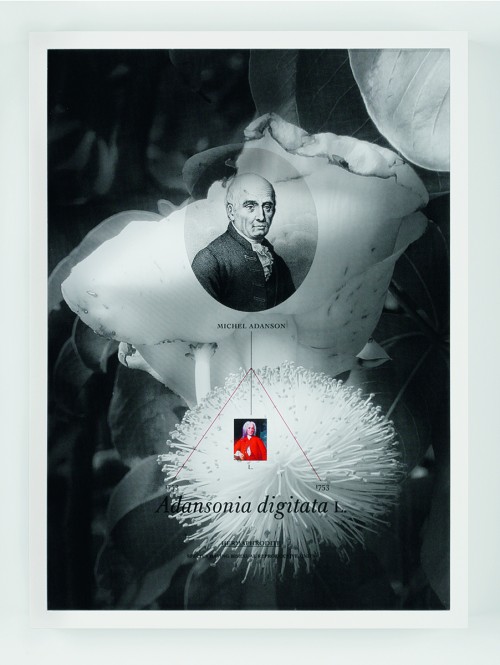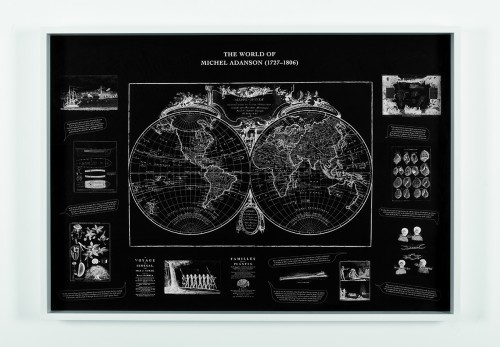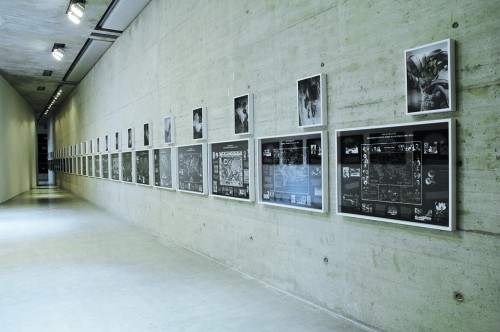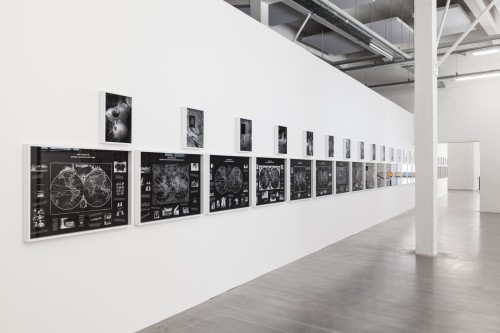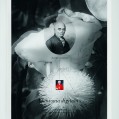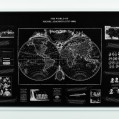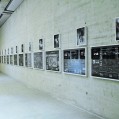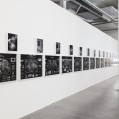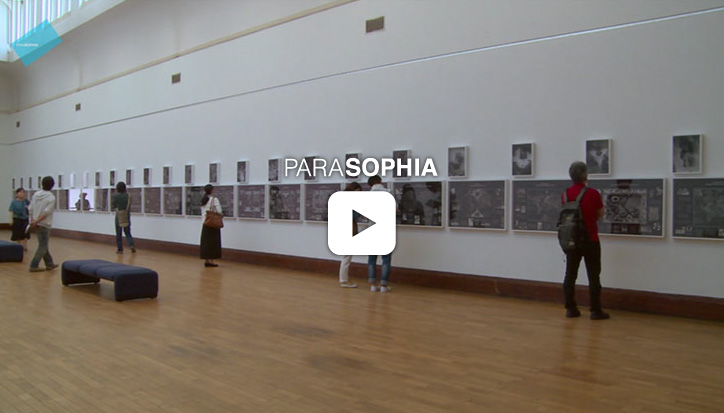Ana Torfs
Ana Torfs
b. 1963 in Mortsel, Belgium; based in Brussels
www.anatorfs.com
Work in exhibition
Family Plot, 2009–10
Installation with 25 lambda prints mounted on aluminum and silkscreen on glass, each in wooden frame; 25 inkjet prints mounted on aluminum, each in wooden frame
See all installation views at higher resolution: www.flickr.com/photos/parasophia/sets/72157656847885932
Ana Torfs has a master’s degree in communication sciences from KU Leuven, and completed a master’s program in film and video at the Sint-Lukas University College of Art and Design in Brussels. She works in a wide range of media, including video, prints, slide projection, film, sound, photography, silkscreen, and tapestries. The relation or tension between text/language and image plays a central role in her work, and with it all the related processes of representation, interpretation, and translation. She enables a topical and authentic perception of the scattered remains of our cultural and political history. Existing texts and/or images are often used as a starting point for her works, which condense into precisely composed collages or montages, suffused with elliptical allusions. In the past years Torfs had solo exhibitions in K21, Düsseldorf and Generali Foundation, Vienna (Album/Tracks A+B, 2010) and in Wiels, Brussels (Echolalia, 2014). She recently participated in major group exhibitions such as Manifesta 9 (Genk, Belgium, 2012), the 11th Sharjah Biennial (United Arab Emirates, 2013), The Way of the Shovel at MCA Chicago (2013), and the 1st Biennial of Cartagena de Indias (Colombia, 2014). In Japan, she was featured in Reading Cinema, Finding Words: Art After Marcel Broodthaers, which traveled to the National Museum of Modern Art, Kyoto (2013) and the National Museum of Modern Art, Tokyo (2014).
At Parasophia: Kyoto International Festival of Contemporary Culture 2015, Torfs presents Family Plot, an installation that proposes a selective gallery of forefathers in 50 framed prints. The central figure is the Swedish naturalist Carl Linnaeus, who introduced a formal system for the naming of plants that is still in use now. In the era of colonization, this nomenclature often entailed the dedication of exotic plants to their—usually European—discoverers. With her fascination with the names of plants as a starting point, Torfs explores the “worlds” of the 25 selected name patrons from the era of European exploration and imperialism, and lays bare a cultural history progressing along an axis that cannot be comprehended from a single historical perspective. The viewer, standing before the thoroughly researched and beautifully arranged work, experiences a pictorial atlas that proposes a very personal view of the dark hours of world history.
-
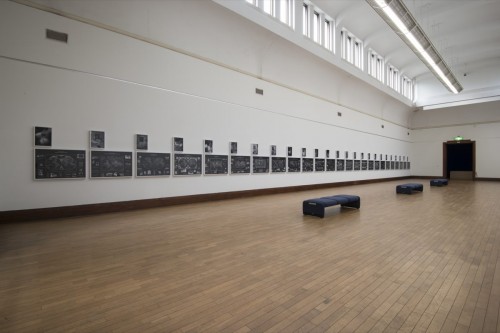
Ana Torfs, Family Plot, 2009–10. Installation view at Kyoto Municipal Museum of Art for Parasophia: Kyoto International Festival of Contemporary Culture 2015. Photo by Norimasa Kawata




